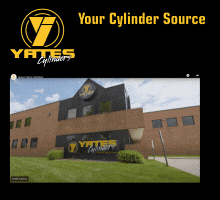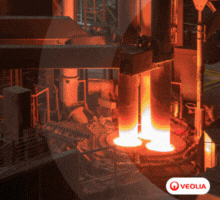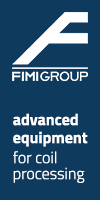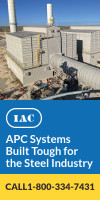U. S. Steel Targets Keetac Mine for Upgrade
08/01/2022 - United States Steel Corporation posted a stand-out second quarter on Friday and announced that it had chosen its Keetac iron ore mine for a US$150 million investment.
For the quarter ending 30 June, the company reported net earnings of US$978 million, or US$3.42 per diluted share, on net sales of US$6.29 billion. In the same quarter last year, the company reported net earnings of US$1.01 billion, or US$3.53 per diluted share, on sales of US$5.03 billion.
"As we continue to demonstrate the execution of our strategy, it is timely to reflect upon just how much progress we’ve made over the past twelve months, exhibiting continued record safety performance, generating nearly US$6.7 billion of adjusted EBITDA and over US$4 billion of free cash flow, building over US$3 billion of cash, and returning nearly US$850 million to stockholders, including July's buyback activity," said U. S. Steel president and chief executive David Burritt.
"We are bullish on U. S. Steel’s future and confident in our ability to execute our Best for All strategy," he added.
The company said it is firing on all cylinders with each of its four units – its legacy flat-rolled business, Big River Steel, U. S. Steel Košice in Europe, and its tubular operation – contributing positively to earnings.
"This strong performance contributed to our quarter-ending cash balance of over US$3 billion and nearly US$5.5 billion of liquidity," Burritt told investors during the company’s quarterly earnings call on Friday.
Also during the call, Burritt revealed that U. S. Steel will invest US$150 million in its Keetac pelletizing plant, allowing it to produce direct reduction (DR)–grade pellets.
"Keetac’s high-quality ore body and long mine life makes it the best choice for DR-grade pellet capabilities," Burritt said. "We will have the ability to produce both blast furnace and DR-grade pellets at Keetac in the future. These actions will allow us to become increasingly self-sufficient to feed our mini-mill segment with key metallics."
U. S. Steel in June announced its intention to upgrade either the Keetac or Minntac plant, with construction set to begin this fall. U. S. Steel at the time said it would either sell the pellets to third-party direct reduction producers or use them to feed a potential future direct reduction or hot briquetted iron facility of its own.
U. S. Steel executives said on Friday that such a plant is indeed in the cards, but that the timing would likely be later rather than sooner.
“DRI is an opportunity for the future. And with the announcement of the float plant at Keetac, that allows us to get started,” said chief strategy and sustainability officer Richard Fruehauf.
Added Burritt: I think the key word in all this (is) optionality; that's what everybody should think of. We need to make sure that we have nimbleness, flexibility, adaptability. And right now, there's nothing in the capex (budget) related to (a DRI plant) even though that wouldn't necessarily be a huge number because we have, again, lots of options in terms of how to put that in and when we put that in.”
"As we continue to demonstrate the execution of our strategy, it is timely to reflect upon just how much progress we’ve made over the past twelve months, exhibiting continued record safety performance, generating nearly US$6.7 billion of adjusted EBITDA and over US$4 billion of free cash flow, building over US$3 billion of cash, and returning nearly US$850 million to stockholders, including July's buyback activity," said U. S. Steel president and chief executive David Burritt.
"We are bullish on U. S. Steel’s future and confident in our ability to execute our Best for All strategy," he added.
The company said it is firing on all cylinders with each of its four units – its legacy flat-rolled business, Big River Steel, U. S. Steel Košice in Europe, and its tubular operation – contributing positively to earnings.
"This strong performance contributed to our quarter-ending cash balance of over US$3 billion and nearly US$5.5 billion of liquidity," Burritt told investors during the company’s quarterly earnings call on Friday.
Also during the call, Burritt revealed that U. S. Steel will invest US$150 million in its Keetac pelletizing plant, allowing it to produce direct reduction (DR)–grade pellets.
"Keetac’s high-quality ore body and long mine life makes it the best choice for DR-grade pellet capabilities," Burritt said. "We will have the ability to produce both blast furnace and DR-grade pellets at Keetac in the future. These actions will allow us to become increasingly self-sufficient to feed our mini-mill segment with key metallics."
U. S. Steel in June announced its intention to upgrade either the Keetac or Minntac plant, with construction set to begin this fall. U. S. Steel at the time said it would either sell the pellets to third-party direct reduction producers or use them to feed a potential future direct reduction or hot briquetted iron facility of its own.
U. S. Steel executives said on Friday that such a plant is indeed in the cards, but that the timing would likely be later rather than sooner.
“DRI is an opportunity for the future. And with the announcement of the float plant at Keetac, that allows us to get started,” said chief strategy and sustainability officer Richard Fruehauf.
Added Burritt: I think the key word in all this (is) optionality; that's what everybody should think of. We need to make sure that we have nimbleness, flexibility, adaptability. And right now, there's nothing in the capex (budget) related to (a DRI plant) even though that wouldn't necessarily be a huge number because we have, again, lots of options in terms of how to put that in and when we put that in.”



.jpg?lang=en-US&ext=.jpg)
-(1).gif?width=220&height=200&mediaprotectionhash=8011a71ede637cd523c67b1296fc49e6151560fde821a46f29cc85998cc76615&ext=.gif)



